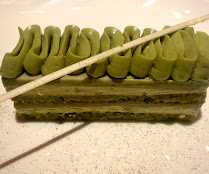Wabi Sabi at The Oberoi, Bangalore
The best Japanese food is expensive. The ingredients are expensive. The kitchen equipment is expensive starting with the knives used to prepare sashimi. Really good tuna or salmon that hasn’t been frozen for months is expensive, as is A4 or A5 Wagyu with that beautiful marbling.
Which is why with the notable exception of Izumi and the Japanese run corporate restaurants like Matsuri the best Japanese food in India is found in 5 Star Hotels.
Of course, as anyone who has spent Rs.25,000 on a meal for two at Wasabi will tell you, the word best is a relative term, one that doesn’t really denote excellence.
I feel Edo is good, but not great. I feel Wasabi is a mediocre facsimile of its earlier self that has failed to evolve and to stay relevant. Of course places like Orient Express at Taj Palace prove you don’t necessarily need to change to stay relevant. However, the food in Wasabi was never classic Japanese but a riff on America’s take on Japanese as created by Nobu Matsuhita. And just like Nobu is no longer seen as avant garde in comparison to places like Zaiyu Hasegawa’s Den, instead becoming a place frequented by oligarchs and oil sheikhs from Budapest to Dubai, similarly Wasabi is now just a place where rich people in Delhi and Mumbai go to see and be seen, and not really for the food.
Of course, the food awards in India will disagree with me, but I’ve never taken their rankings and opinions seriously except for one or two. For me there is only one really good high end Japanese restaurant in India and that is Megu at The Leela, Chanakyapuri. It doesn’t matter what you pay for your meal there because you will have to fly to another country to eat a comparable Japanese meal in India.
At least that used to be the case until Wabi Sabi opened. Wabi Sabi as the new Japanese and Chinese restaurant at The Oberoi, Bangalore (new because it opened just weeks before the lockdown which means that it is only now that it has really started service in a consistent manner). I went there last weekend for an Omakase meal with low expectations. First, I am wary of restaurants that serve two completely distinct cuisines. Secondly, I didn’t know how their supply chain worked in these strange times and I wasn’t sure if the food would have the freshness that great Japanese food needs. Finally, they didn’t have a chef from Japan but someone from the Philippines.
To say that I was surprised by the food would be an understatement. It was absolutely spectacular. First grade ingredients, a great balance between classic and modern, creative but familiar. Chef Bobby played not just with flavour but also with texture, temperature and colour. And I had the best Sashimi I’ve had in India in years. This is beyond a shadow of a doubt the best Japanese fine dining restaurant South of the Vindhyas.
We had:
Chilled silken tofu with shoyu and furikake. The tofu was Morinaga, the Japanese brand and a reminder of how tofu can actually be amazing.
Miyabi clear soup (onion soup) with wakame seaweed, mushrooms and spring onions. The Dashi that Chef Bobby used was made with Katsuboshi (fish flakes), Kombu (dried kelp) and dry shitake mushrooms.
Horenso Goma ae, probably the dish of the meal. Horenso is Japanese for spinach and goma ae is a sesame dressing. A cold spinach dish in a combination of sesame paste, japanese vinegar which is infuse w/ combu and citrus flavour. Served with an oil made from seaweed extract with light sesame oil .
Pan fried Gyoza. Chicken and Shitake Mushroom. The only thing at dinner that was unexceptional.
Sushi had two American fusion style dishes, a Salmon roll and a Forest gumption mushroom sushi. And it had two classics,
Gindara aburi (black cod) and Sake harasu aburi ( salmon belly).
For the Sashimi, Tuna otoro, hamachi and scallops come from Japan while the salmon is from Norway. The scallops had marinated salmon roe on top and were drizzled with ponzu citrus sauce.
Of course they had a black cod miso but instead of the done to death Wasabi/Nobu version, this one came with quinoa, edamame, citrus beetroot jelly, den miso and lemon foam.
I found it interesting that they sourced their beef (not buffalo) locally rather than import it. But there was a lot of intelligence on their choice of cut, using short rib rather than a more prime cut so that you don’t get the quality difference that you do with a steak. The ribs were braised slowly and served with an outstanding wasabi mashed potato, toasted sesame, shiitake mushroom and teriyaki sauce.
For dessert, there was a dense rich chocolate with a yuzu dark chocolate cream and a peanut butter crunch. The slight sour tang brought a lightness and acidity to the chocolate.
And finally, there was a really excellent Nokcha and Pistachio petit gateaux with a Korean green tea ganache and pistachio butter cream that reminded me of places like Quintessense and L’Effervescence in Tokyo that are boldly adding Japanese elements and flavours to classic French food.
I’ll definitely go back and try the Chinese menu as well but I now have a go to place whenever I want some seriously good Japanese food in Bangalore.












Comments